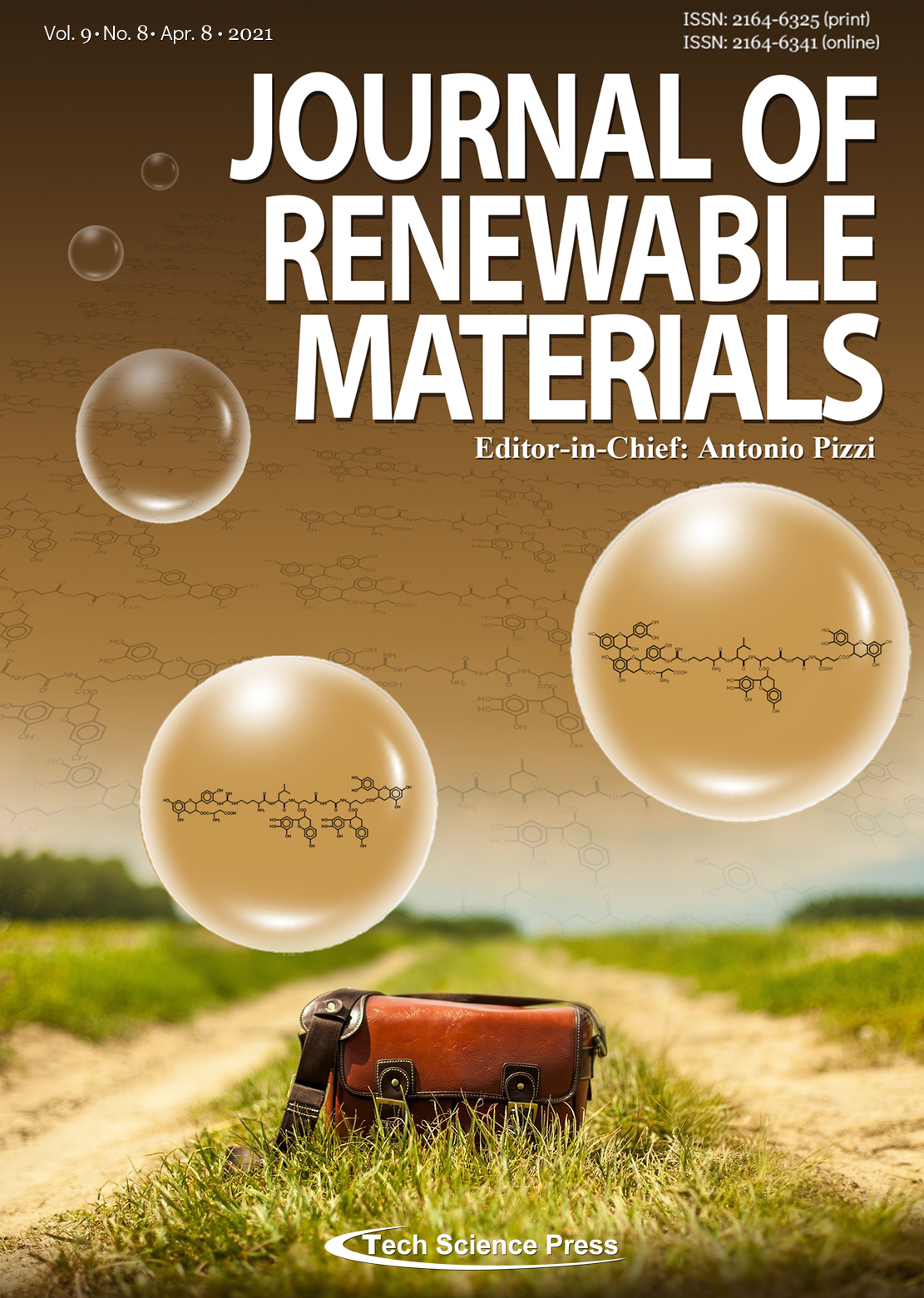Preparation and Properties of Polyacrylamide/Sodium Alginate Hydrogel and the Effect of Fe3+ Adsorption on Its Mechanical Performance
Zheng Cao1,2,3,4,*, Yang Zhang2, Keming Luo2, Yinqiu Wu2, Hongxin Gao2, Junfeng Cheng2,*, Chunlin Liu2,3, Guoliang Tao2, Qingbao Guan1, Lei Zhang5
Journal of Renewable Materials, Vol.9, No.8, pp. 1447-1462, 2021, DOI:10.32604/jrm.2021.015593
- 08 April 2021
(This article belongs to the Special Issue: Biomass-Derived Functional Hydrogels)
Abstract
The preparation and application of functional hydrogels based on natural polysaccharides have always been a hot research topic. In this study, using acrylamide (AM) monomer, N, N'-methylene bisacrylamide (MBA) as cross-linking agent, potassium persulfate (K2S2O8) as initiator, in the presence of natural polysaccharide sodium alginate (SA), the PAM/SA hydrogel was prepared by free radical polymerization. Fourier transform infrared spectroscopy (FT-IR), swelling performance tests, scanning electron microscope (SEM), thermogravimetric analysis (TGA), UV-visible spectrophotometer, mechanical property measurements were carried out to analyze the composition, morphology, and performance of the hydrogels. The swelling behavior, dye adsorption performance, and the
…
More >
